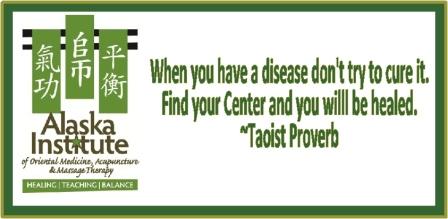Essential Tremors
Essential Tremors are the
most common movement disorder. While the
cause of Essential Tremor (ET) is still unknown, Western Medicine calls it a
nerve disorder. It is thought to be
abnormal electrical brain activity that is being processed through the thalamus. The thalamus is deep in the brain and
controls and coordinates muscle activity.
While ET is not a natural part of the aging process, it does tend to
show up between the ages of 40 and 50, though it also can be present in
childhood. About 10 million people in
the US are affected. Genetics are
responsible for about half the cases.
Symptoms include: shaking in upper limbs and/or head, a shaking
voice, tremors that get worse during emotional stress, tremors that get worse
with purposeful movement, problems with balance and fine motor skills. Other diseases and factors that manifest
these symptoms include Parkinson’s disease, multiple sclerosis, fatigue after
exercise, extreme emotional distress, brain tumors, some prescription drugs,
metabolic abnormalities, and alcohol or drug withdrawal. It can also be attributed to thyroid disease,
excessive caffeine intake or side effects from medication.
Western Treatments include medications,
focused ultra sound and, when severe enough, surgery. Medications of oral drugs include Inderal,
Neurontin, Mysoline, and Topamax. Other
options include tranquilizers and also Botox injections (helpful for head and
vocal tremors). The surgery involves implanting
electrical leads into the thalamus.
When researching how massage
therapy can help ET, I came across a case of a 63-year old female who was affected
in her hands and head. During a 5 week
study, the aim was to reduce the firing of the sympathetic nervous system and
so the techniques they used were relaxation-based, including Swedish massage,
hydrotherapy, myofascial release, and diaphragmatic breathing.
The woman showed improvement
in the fine motor skills affected by tremors after each session. She also had an increase in her cervical
range that was observed between her first to last visit. The article went on to say that more studies
need to be done, but it is believed massage therapy eases tremor intensity
through encouragement of the parasympathetic response.
In Traditional Chinese Medicine,
Tremors, whether ET or as a symptom of a larger disease like Parkinson’s, are
thought to be a Yin deficiency of the Kidney and Liver. This deficiency generates “Internal Wind”
which arises from the Liver. The Liver
is looked at as a whole body system the controls movement by ensuring
nourishment for the tendons and regulating the smooth flow of Qi through out
the body. To preform this function, the
Liver needs adequate of Yin and blood that help supply the nourishment needed
for the body. This is generated in the
Kidneys and is considered Kidney-essence.
When Kidney-essence is deficient it leads to malnourishment of the
tendons, which puts the tendons into a spasmodic state and creates the movement
of shaking that is similar to wind.
Other symptoms related to Internal Wind are that of dizziness and
stiffness.
Another image of deficient
Kidney Yin is lack of body fluids and dehydration. Kidneys relate to the water element. Imagine the land that has been through a long
drought and the dryness that occurs. This causes agitation, which stirs up a
dry wind that blows through the barren landscape. This is Internal Wind.
Internal Wind can also result
from diseases that damage the Liver such as excessive use of alcohol and drugs,
or a history of emotional irritability and anger. Finally, External Wind can enter the body and
create Internal Wind. Symptoms of External
Wind often include aches and pains.
Internal Wind then moves that into shaking and trembling.
It is believed that after 40
years of age, Yin starts to decline and can be decreased by half. This gives rise to Liver Yang agitation that
then creates Internal Wind. This is why it
is not uncommon to see tremors appearing in middle to older ages.
Treatments for Internal Wind
and ET is a mixture of acupuncture, herbal formulas, and diet. The approach to any treatment would include a
survey to determine the patient’s constitution, including diagram of
characteristics that show a persons constitution, past history, family history
and associated symptoms. From there, the
focus would be on nourishing Kidney and Liver Yin while sedating and calming
the Internal Wind. Each individual would
have a complex formula specific to his or her constitution, which makes it very
difficult to have just one formula that would work for everyone.
One case I found online, is
of a 38 year old white female with tremors in both her head and upper
extremities. Since the age of 2 or 3 she
had shaking of the upper limbs but now her head was shaking so badly she
couldn’t take it anymore. Several
medical centers told her she had to live with the tremors and hopefully find
some relief from the medication prescribed: propranolol and diazepam. She turned to Chinese medicine.
Her constitution was
determined and she did a series of 3 acupuncture sessions. Two months after the last session she
returned showing no symptoms. She had
stopped taking propranolol and was only taking diazepam at 5 mg twice a day. They advised her to slowly come off diazepam
and come in for more treatments if symptoms reappeared. She returned after 3 months off medication
and completely symptom free.
Traditional Chinese Medicine
can be extremely successful with chronic ailments, like Essential Tremors. I believe that is because every case is
treated uniquely, as each individual is unique.
Never believe that something can not be healed. Our bodies are more powerful than we know, we
just have to learn to listen.
References:




